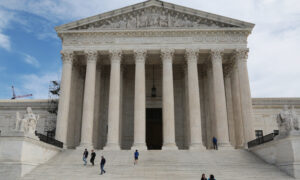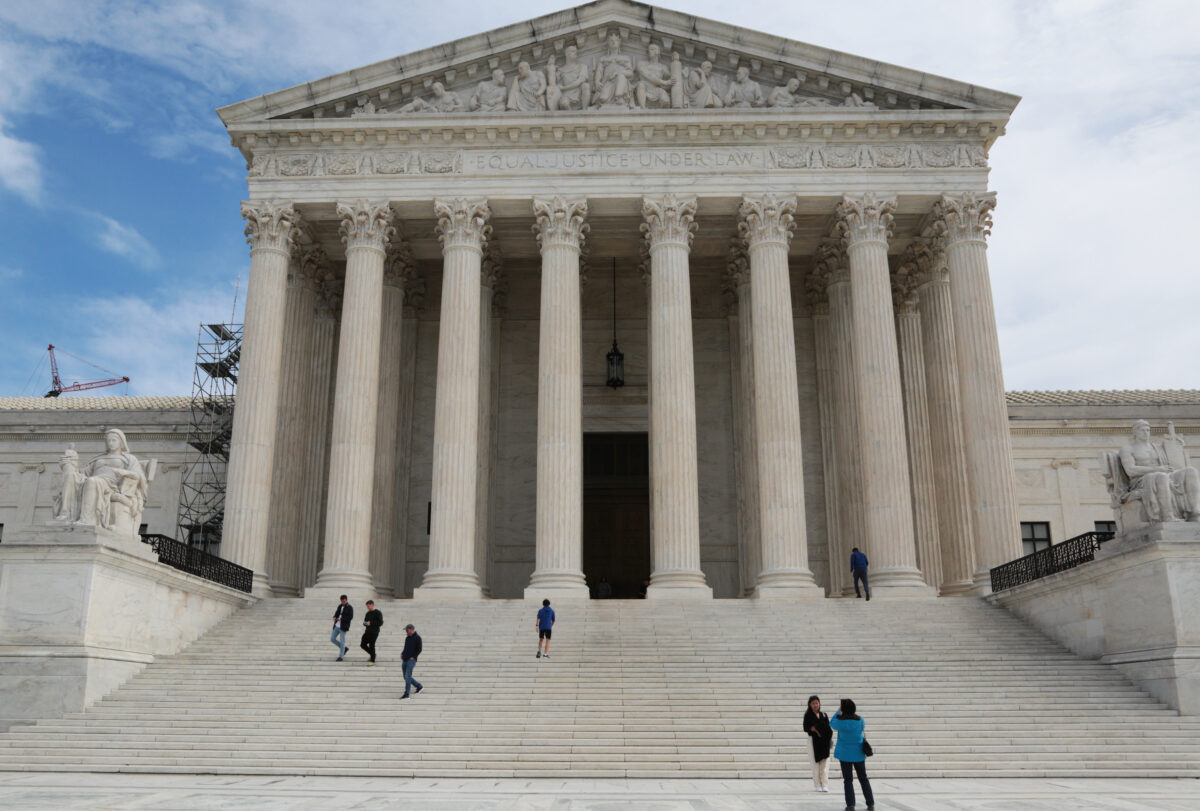
News Analysis
The Supreme Court ruled on June 29 that affirmative action is unconstitutional. Nonetheless, history suggests that liberal states and institutions could obstruct implementing the decision that race-conscious admissions violate the equal protection clause of the 14th Amendment.
GianCarlo Canaparo, senior legal fellow at The Heritage Foundation’s Edwin Meese III Center for Legal and Judicial Studies, predicted to The Epoch Times that colleges and universities will attempt to go around the decision by utilizing a race-neutral standard to produce racial diversity.
“They may give preferences to applicants from zip codes or high schools where they know a lot of black and Hispanic students live, and disadvantages to people from zip codes with high Asian and white populations,” he said. “This is still forbidden by this Supreme Court decision— ‘deals with substance, not shadows’—but it will be hard to catch universities if they discriminate on the sly.”
Following the Supreme Court ruling, the State University of New York (SUNY) defended affirmative action.
“Race-conscious admissions policies have enriched our institutions and our nation,” said SUNY Chancellor John King and the SUNY Board of Trustees in a joint statement. “Yet despite the existence of race-conscious admissions policies, Black and Latino students, along with other groups, are still underrepresented across institutions of higher education as students, faculty members and administrators.”
California Gov. Gavin Newsom appeared to say in a statement, following the court’s decision, that his state will not be deterred as “no court case will ever shatter the California Dream. Our campus doors remain open for all who want to work hard—and our commitment to diversity, equity, and equal opportunity has never been stronger.”
Illinois Gov. J.B. Pritzker said in a statement that “no archaic ruling will ever change” the state’s policy of promoting minority students in colleges and universities.
Disregard for Supreme Court
Howard Slugh, an attorney who has litigated constitutional issues, told The Epoch Times that the Supreme Court decision is “ambiguous” as the highest court in the United States did not explicitly say whether it overturned the 1978 case of Regents of the University of California v. Baake, and the cases which followed it, which had been seen as establishing the test for how and when it is acceptable to consider race in college admissions.
Josh Blackman, a professor at the South Texas College of Law Houston, told The Epoch Times that universities will try to circumvent the ruling by issuing “diversity statements,” and that although the Supreme Court said application essays cannot be used as a litmus test for race, “savvy admission officers will know how to read them in just the right way.”
David Bernstein, a constitutional law professor at George Mason University’s Antonin Scalia Law School, echoed Mr. Blackman and added that numerous state universities will admit students who are toward the top of their secondary school class, a practice in Florida and Texas.
Others, he said, will simply disregard the ruling, as the Biden administration will not hold them accountable. He also predicted that schools will do away with standardized test scores, making it easier for underprivileged minorities to get admitted.
Other Recent Rulings
It is not only the affirmative action decision that states and higher education institutions could seek to go around.
In the recent case of a website designer who declined to do work for a same-sex wedding, the Supreme Court ruled in the designer’s favor. Mr. Slugh, general counsel for the Jewish Coalition for Religious Liberty, said he expects the assault against those of faith in the service sector to continue.
“We’re likely to see more litigation regarding whether different activities are as expressive as web design,” he said. “The Supreme Court didn’t have to answer that question because Colorado had stipulated that 303 Creative was engaged in expressive conduct. It is unclear where the boundaries will be.”
Nonetheless, Mr. Blackman said to expect the number of such cases to decrease given the infrequency of same-sex couples going to those of religious faith for a wedding website.
Another issue where there is already an attempt at a workaround is with the Biden administration and student loan debt.
The Supreme Court on June 30 deemed President Joe Biden’s $400 billion student debt forgiveness program unlawful. Later that day, Mr. Biden announced that the Department of Education can “compromise, waive, or release loans under certain circumstances” in accordance with the Higher Education Act of 1965. He also announced a program where students can defer their payments for up to one year without being referred by the Department of Education to debtors.
Mr. Canaparo said he expects the new policies to fail. He noted that “the Higher Education Act does not demonstrate Congress’s plain intent to delegate to the president the power to end hundreds of billions of dollars of student loans.”
Pushing Gun Control Laws
When it comes to workarounds, liberal states such as California and New York have sought to do so with gun control, despite the Supreme Court reaffirming the Second Amendment right of individuals to bear arms in its ruling in District of Columbia v. Heller in 2008.
California has some of the strictest gun laws in the United States (pdf). Shotgun purchasers must be at least 18 years old, while handgun buyers must be at least 21 years old. Since July 1, the Firearm Industry Responsibility Act has been in place in the state, which mandates that firearms salespeople, including those who sell privately, must have a license to sell firearms.
The law also allows people to more easily bring gun manufacturers to civil court.
There was also the 2010 case of McDonald v. City of Chicago, where the Supreme Court ruled that the Second Amendment includes the right to self-defense at home with a firearm and that states must abide by it in accordance with the 14th Amendment’s due process clause. The decision nullified Chicago’s handgun ban.
Nonetheless, it is still difficult to get a firearm in Chicago. This year, Illinois enacted an assault weapons ban.
Upcoming Cases
Mr. Blackman pointed out that “in the wake of Bruen, blue states have tried to evade the landmark Second Amendment ruling” and that “it is a massive resistance.” In the 2022 case of New York State Rifle and Pistol Association v. Bruen, the Supreme Court struck down a New York state law requiring people to show “proper cause” in order to carry a concealed firearm.
Since then, New York enacted an amended Concealed Carry Improvement Act.
“Right now [New York and California are] trying to figure out just what they can get away with,” said Mr. Canaparo. “They’re also probably hoping that friendly lower court judges in their states will let them get away with a lot, and that the Supreme Court won’t take another Second Amendment case any time soon.”
However, in its next term, the Supreme Court is set to take up a case about whether those under a domestic violence restraining order can posses a firearm, something that is banned under federal law.
Also in the next term, which begins Oct. 2, the Supreme Court will determine what constitutes a serious drug offense. There is also another redistricting case before the court, as it decided two in the most recent term. Additionally, the court is set to hear a couple of cases related to the social media accounts of public officials. Moreover, the court will determine whether the funding structure behind the Consumer Financial Protection Bureau is constitutional.
These cases also have the potential for circumvention based on whether the court issues airtight decisions.


















































